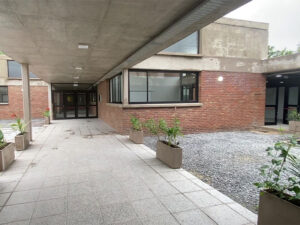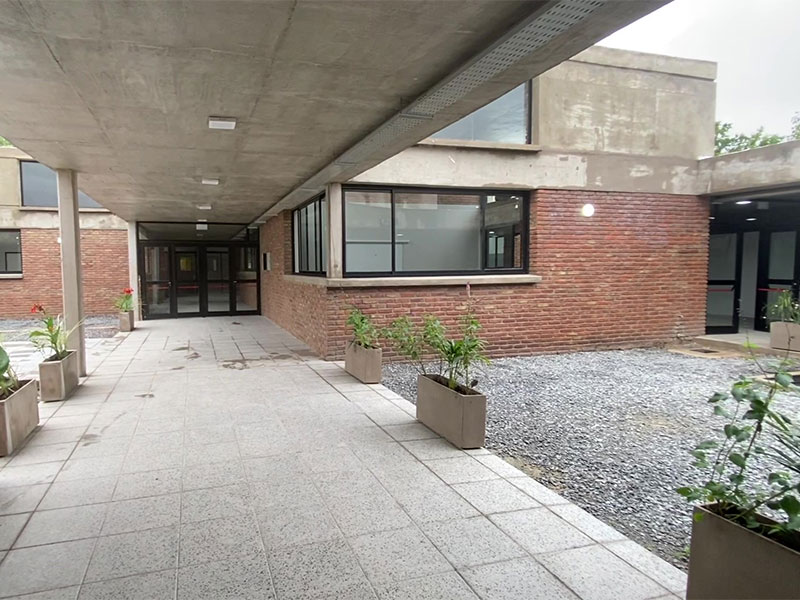Astronomical Ephemerides – March, 2022
Astronomical Ephemerides – March, 2022


The ephemeris, more than a calendar of astronomical events that will take place in our sky, are invitations to look at the sky and perhaps realize how big the whole of which we are a part is.
Moon phases
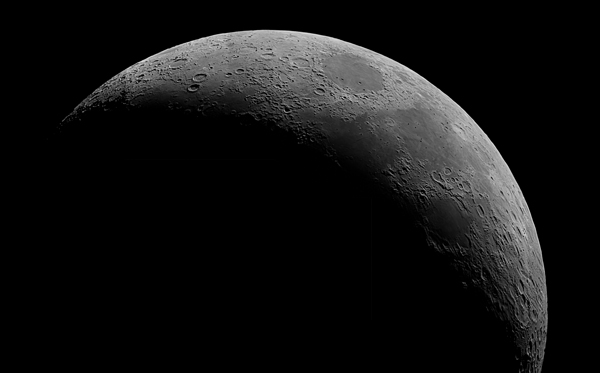
March 2 – New Moon
March 10 – First Quarter
March 18 – Full Moon
March 25th – Last Quarter
Conjunctions in March
Planetary conjunctions – the apparent view, here from Earth, that two or more celestial bodies are close to each other in the sky – are a constant in the cosmos and, therefore, become guides for locating and identifying the stars.
Note: Angles and cardinal points may vary according to the geographic position of the observer. Those mentioned here have the city of São Paulo/Brazil as a reference of angle and geographical coordinate.
March 2
Conjunction between Mercury and Saturn
On this day, Mercury will pass 0.7° northeast of Saturn forming the conjunction.
They will be visible from 4:40 am, when they reach 23° above the horizon line in the east direction, and will remain so until approximately 5:30 am (Brasilia -3 UTC), when the pair will be at 41° above the horizon line and will be blurred by the glare of sunlight. Both in the constellation of Capricorn.
The apparent brightness of Mercury, in our perception, will be of magnitude 0.1 and Saturn of magnitude 0.8.
Observable all over the world.
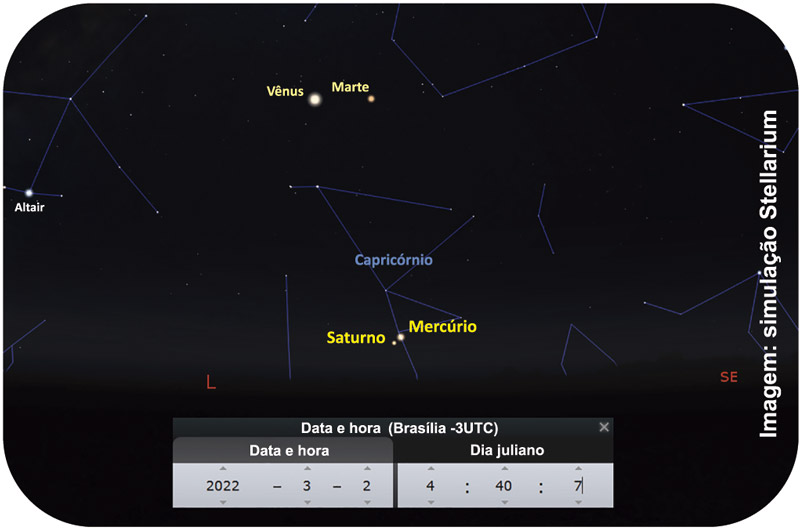
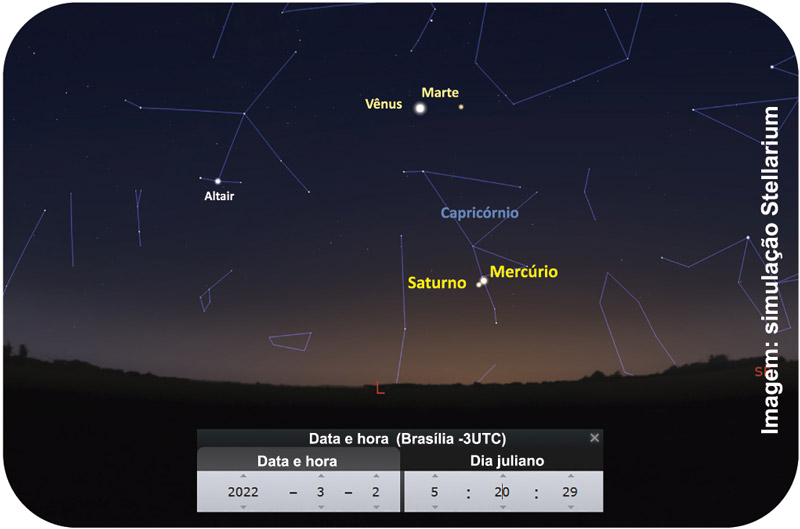
March 12
Conjunction between Venus and Mars
At dawn on the 12th, the conjunction between Venus and Mars will form when Venus passes at 3°59′ north of Mars. These planets will be visible in conjunction 42° above the eastern horizon, more or less between 3:00 am and 5:40 am (Brasilia -3UTC), when they will be lost in the Sun’s glare.
At this conjunction, apparently, we will see Venus shine at a magnitude of -4.5 and Mars at a magnitude of 1.2. Both located in the constellation Capricorn.
Observable all over the world.
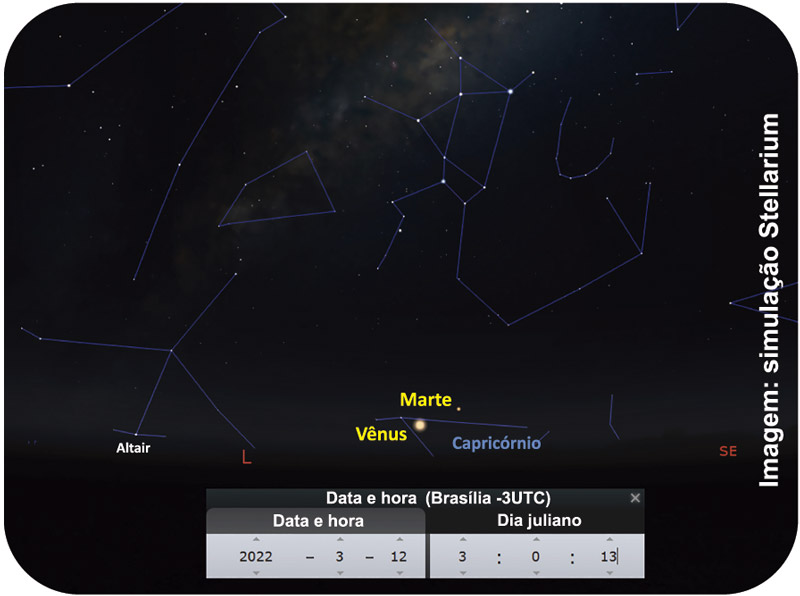
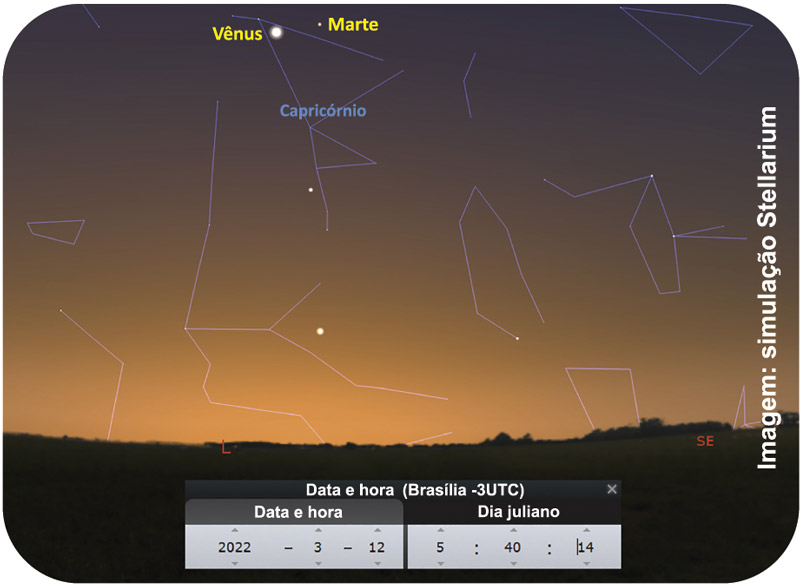
March 28
Venus, Saturn, Mars and the Moon in a single glance
The dawn of the 27th will allow us to observe Venus, Saturn, Mars and the Moon with a single look. They will almost form a quadruple conjunction between 4:00 am and 5:40 am (Brasilia -3UTC) at a height of approximately 41° above the eastern horizon line.
The four celestial bodies will be located in the constellation of Capricorn.
For us, in terms of magnitude of brightness, it will be -4.3 for Venus; 0.7 for Saturn; 1.1 for Mars and -10.8 for the Moon.
Observable all over the world.
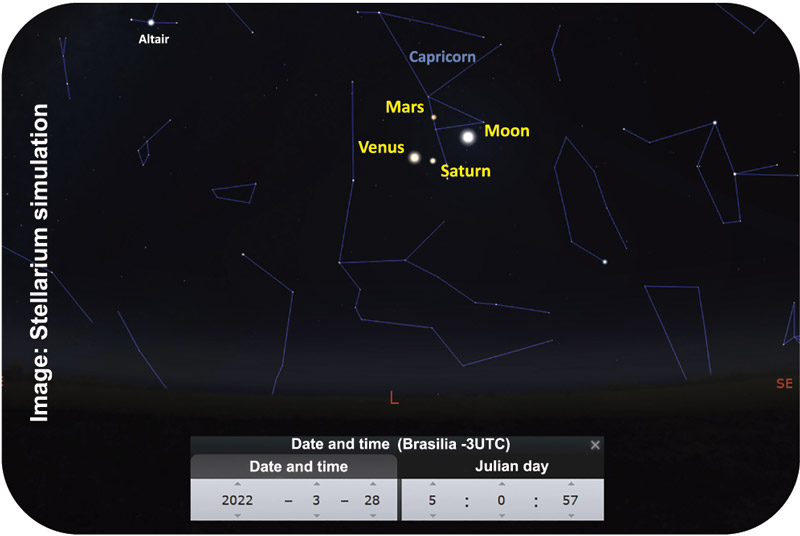
March 29
Conjunction between Venus and Saturn
The conjunction between Venus and Saturn will be characterized at the moment when Venus passes 2°09′ north of Saturn, from 3:30 am to 5:40 am (Brasilia -3UTC), when the pair reaches 42° above the eastern horizon line and becomes lost in the glare of sunlight.
Venus and Saturn will be located in the constellation of Capricorn and shining, respectively, at magnitudes of -4.3 and 0.7.
Observable all over the world.
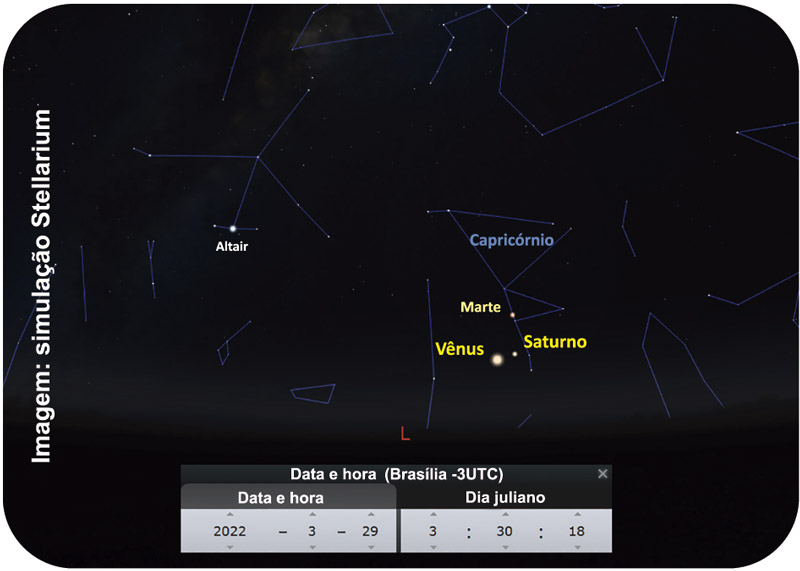
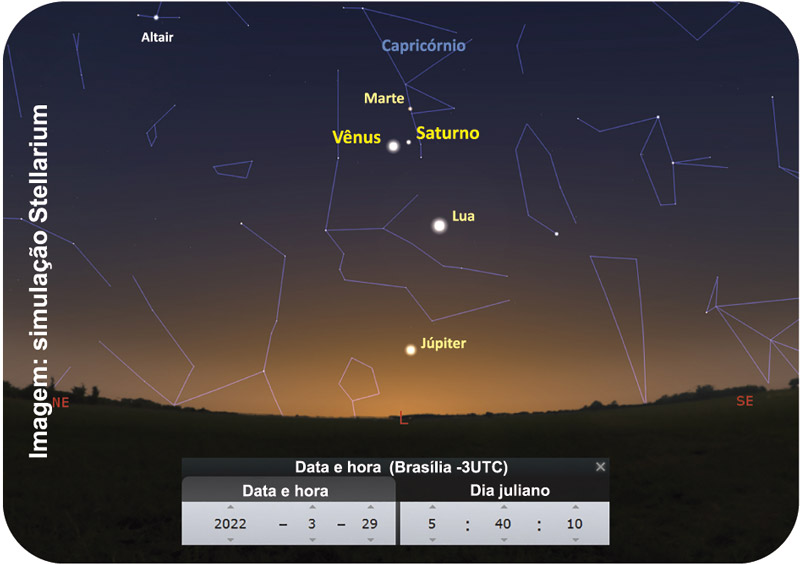
March 20
Autumn Equinox in the Southern Hemisphere and Spring Equinox in the Northern Hemisphere
Equinox…
… When day and night are of the same length – twelve hours – everywhere on the Earth and the northern and southern hemispheres receive the same incidence of sunlight.
There’s a difference in the distribution of solar rays between the two hemispheres due to the inclination of approximately 23°27′ of the Earth’s axis of rotation (movement that the Earth performs around its own axis) in relation to the axis of translation (movement that the Earth performs around the Sun).
As a result, sunlight falls more intensely in the northern hemisphere in one period and, in the southern hemisphere, in the other period of the year, according to the movement of our planet. However, on two days of the year, the Earth is positioned at points where the sun’s rays fall perpendicular to the equator, causing the same distribution of light for the two hemispheres, marking the equinox – from Latin, aequus (equal) + nox (night), equal night.
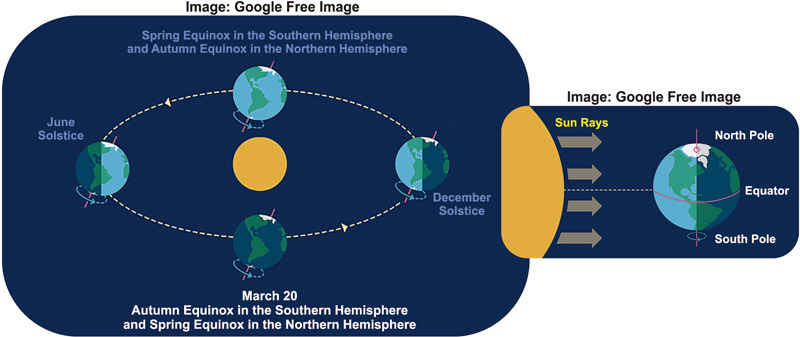
This phenomenon occurs twice a year – in March and September – and marks the beginning of the autumn and spring seasons.
The March 20 Equinox will mark the beginning of autumn in the southern hemisphere and spring in the northern hemisphere. On that day, our king star will rise exactly in the geographic east and will set exactly in the geographic west.
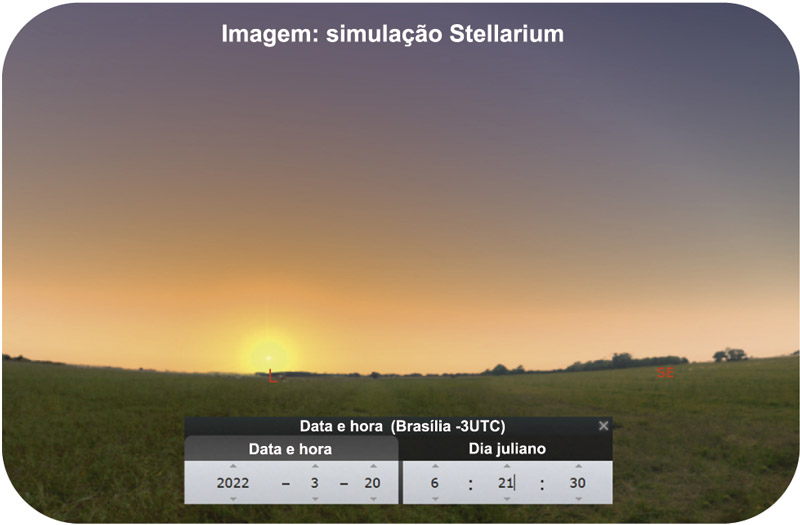
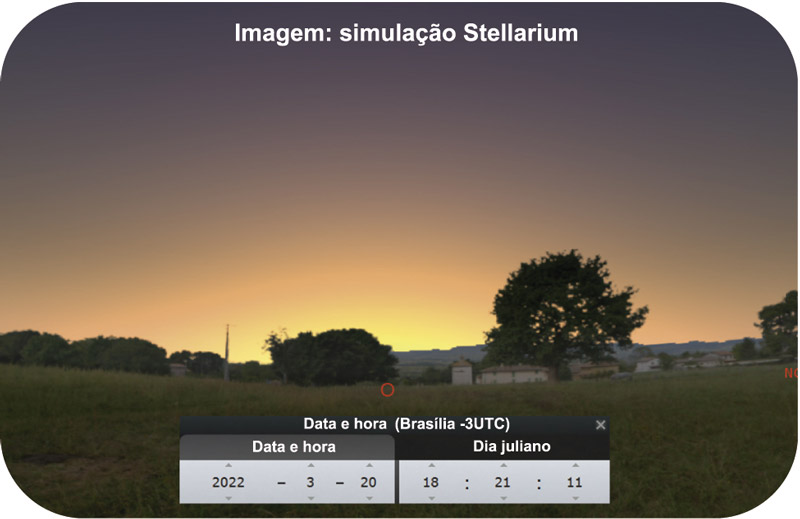
March 20
Maximum Elongation of Venus
The orbit of the planet Venus – known in ancient civilizations as the “morning star” or the Daystar and the “evening star” – as well as that of Mercury is closer to the Sun than the Earth’s orbit, which is to say that its brilliance is also often blurred by the Sun’s glare; therefore, it’s at its greatest angular distance from the Sun – maximum elongation period – that it shines most brightly. At such times, Venus is so bright and visible that it becomes the third brightest object in the sky, second only to the brightness of the Sun and Moon.
On March 20, Venus will be at maximum elongation west of the Sun, when it will reach an angular distance of 47° from the solar disk. Its brightness will be -4.5 magnitude.
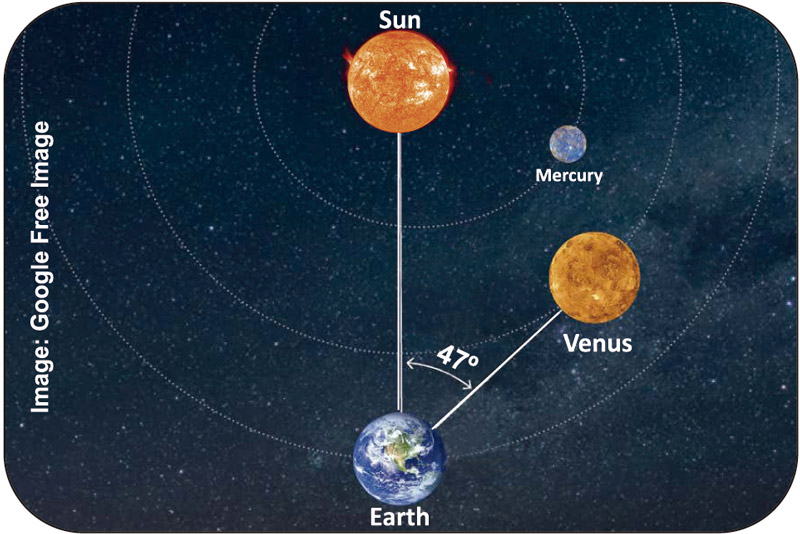
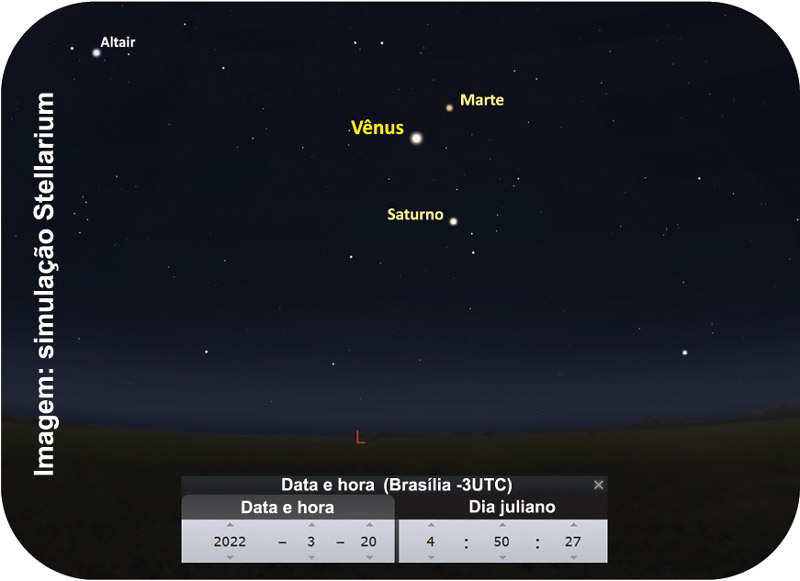
This elongation will be the biggest separation of Venus from the Sun in its morning appearance in 2022. This repeats about every year and a half.
To observe it, direct your gaze towards the geographic east between 3:30 am and 5:50 am (Brasilia -3UTC), approximately.
Observable all over the world.
Sources: jpl.nasa.gov/calendar / solarsystem.nasa.gov / in-the-sky.org / Stellarium.org / earthsky.org / ov.ufrj.br / planetary ephemeris – Jet Propulsion Laboratory (JPL) / seasky. org / jpl.nasa.gov / rmg.co.uk
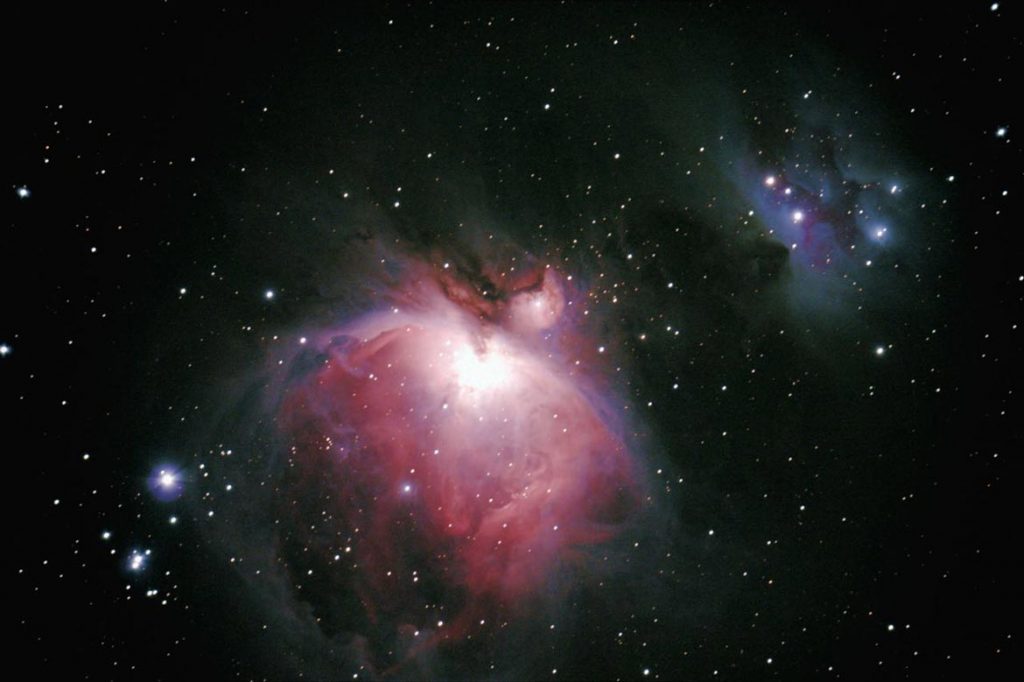
Astronomical ephemerides is a monthly calendar prepared by the Astronomy Sector, which is one of the 12 that make up the PRÓ-VIDA Laboratory Department. In the department, studies, research and scientific experiments related to various themes are developed, as well as field activities and lectures.

Astronomical ephemerides is a monthly calendar prepared by the Astronomy Sector, which is one of the 12 that make up the PRÓ-VIDA Laboratory Department. In the department, studies, research and scientific experiments related to various themes are developed, as well as field activities and lectures.


